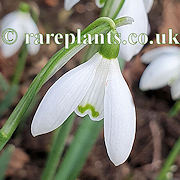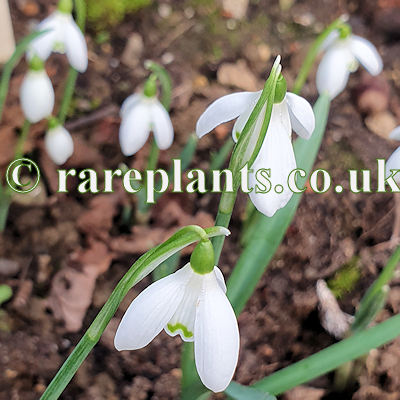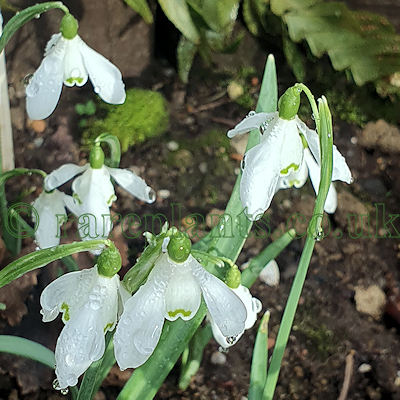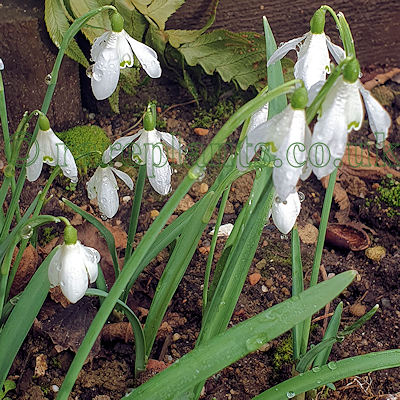Description
Galanthus koenenianus is a distinct and instantly recognisable because the underside of each leaf is distinctly ribbed along its entire length. It is a small plant, rarely over 7-10cm tall with short, narrow leaves. These are no more than 2.5cm long at flowering time and are just 0.5cm wide. They are a glaucous, grey-green to silvery blue shade and often appear to have a ‘oily’ sheen, associated with some other species also. The leaf-vernation is supervolute.
Each inner perianth segment has a U-shaped, green mark at the tip, and sometimes you can make out a small yellowish or light green mark near to the base of the inner petals. This is however neither constant nor diagnostic. The flowers are said to smell of urine by some, but of bitter almonds by others. I have never smelt almonds on the flowers and my own perception is that they smell, very slightly, of stables.
This is thought to be most closely related to G. alpinus, however it differs from that species in its smaller size, transient yellowish petal markings, it’s unique leaf veining and its scent.
Galanthus koenenianus was named discovered by the late German plant collector Manfred Koenen in north-eastern Turkey in 1988 and subsequently named as a new species later in 1988 (W. Lobin, C. D. Brickell and A. P. Davis Kew Bulletin 48 (1) , No. 1 pp. 161-163 (1993). It is endemic to NE Anatolia in Turkey, where it is known only from a handful of locations, so far all of its known localities are on the north-facing (colder, wetter) side of the Pontus Mountains, at an altitude of approximately 1,000-1,700m where it grows in mixed forests, being particularly associated with Hazel (Corylus). This area receives heavy snow in winter and reported companion plants indicate that this does prefer cooler, moist conditions and not hotter, drier ones. We grow it outside, in the open ground – under the shade of Hazel, just to be sure. Growth is reliable however increase is slow. Our original stock, which came to us direct from Manfred, many years ago, has been supplemented by horticultural plants, which have proved to be visually identical.
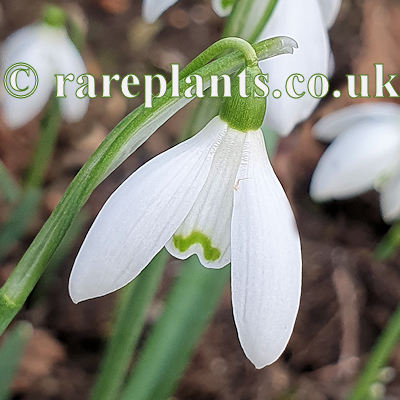
for UK sales ONLY NOT available for export

